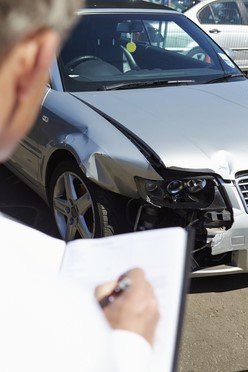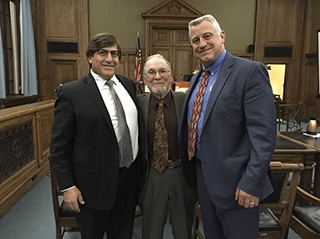Dangerously Designed Highway Causes Your Car Accident? Connecticut Supreme Court Says Tough Luck.
Dangerously Designed Highway Causes Your Car Accident? Connecticut Supreme Court Says Tough Luck.
If the state of Connecticut decides to build a highway on a dangerously steep grade and fails to post signs that warn motorists about those dangers or take other steps to make such a road safer, it cannot be held liable for any injuries or damages that result from accidents, the Connecticut Supreme Court recently held.
In Stotler v. Department of Transportation, the Court construed the defective highway statute governing such claims in a manner that makes it nearly impossible to bring claims for design defects at all.
Paul Stotler was killed in a 2005 accident on Route 44 across Avon Mountain when a truck descending the highway experienced brake failure and collided with multiple vehicles. His estate filed suit against the Department of Transportation, alleging that “the absence of tangible safety measures, including a runaway truck ramp and adequate signage warning of the steep downhill grade, as well as the failure to prohibit trucks on the roadway in the absence of these and other safeguards, rendered the roadway defective.”
Connecticut’s Defective Highway Statute
The claim was brought pursuant to Connecticut’s highway liability statute, General Statutes §13a-144, which provides certain exceptions to the general rule of sovereign immunity that insulates the state from most claims for damages for injuries.
In order for a plaintiff to recover under §13a-144, a plaintiff must prove that:
- The highway was defective as claimed;
- That the Department knew or should have known of the defect;
- That the Department, knowing of the defect, failed to repair it in a reasonable time, and;
- There was no contributory negligence on the part of the plaintiff
In affirming the appellate court’s dismissal of the plaintiff’s claims, the Court noted its previous decisions defining a “highway defect” under the statute as:
“any object in, upon, or near the traveled path, which would necessarily obstruct or hinder one in the use of the road for traveling thereon… If there is a defective condition that is not in the roadway, it must be so direct a menace to travel over the way and so susceptible to protection and remedial measures which could reasonably be applied within the way that the failure to employ such measures would be regarded as a lack of reasonable repair.”
Design Defects Largely Excluded
Noticeably absent from the foregoing definition of “highway defect” are any defects arising from the design of a highway in the first place. Indeed, the Court cited previous cases in which it specifically held that “a defect in the plan upon which a highway is constructed does not come within the defective highway statute” unless the design defect “gave rise to a hazard that would otherwise be actionable” under the statute.
In this case, as noted, the plaintiff alleged that it was the steep downhill grade of the road combined with the lack of adequate safety signage and measures which made the highway allegedly “defective.” The Court concluded that since these alleged defects did not constitute “an object [or condition] in, upon, or near the traveled path, which would necessarily obstruct or hinder one in the use of the road for the purpose of traveling thereon,” it could not be the basis of a claim under the highway defect statute.
Some Design Defects Render a Highway “Out of Repair From the Beginning”
However, this interpretation of the statute ignores the fact that, as the dissenting opinion notes, previous decisions have held that if a highway, constructed according to a defective plan of design, is rendered ‘‘in such a defective condition as to have been out of repair from the beginning,” it can be the basis of an actionable claim.
While, as the dissent notes, the decision as to where and how to build a highway is up to the state, “having made that design decision, the state is required to implement it safely. A road with an extremely steep downhill grade that is traversed by large trucks, without warning signs and with no truck runoff is defective in the same way that a staircase with no railing is defective.”
Indeed, the majority’s decision to construe the highway defect statute so narrowly in Stotler is to in effect ignore the reality that the failure to account for and alert drivers as to a road’s inherent dangers can in and of itself create a “defect” which can lead to accidents and injuries. Those who have suffered as a result should not be denied the right to seek compensation for such injuries.
Nugent & Bryant: Your Connecticut Personal Injury Law Firm
At Nugent & Bryant, we have worked hard to build a reputation as one of Connecticut’s premier law firms advocating for accident victims’ rights. We are an experienced and skilled law firm that has been achieving results for our clients over 30 years. If you have suffered a personal injury or catastrophic injury, call us today at (203) 795-1111 for a free consultation.
This article has been prepared by Nugent & Bryant for informational purposes only and does not, and is not intended to, constitute legal advice. The information is not provided in the course of an attorney-client relationship and is not intended to substitute for legal advice from an attorney licensed in your jurisdiction.
Tell Us About Your Case
Contact Us
We will get back to you as soon as possible.
Please try again later.
Nugent Lawyers © 2009 - 2024. All Rights Reserved - Disclaimer


